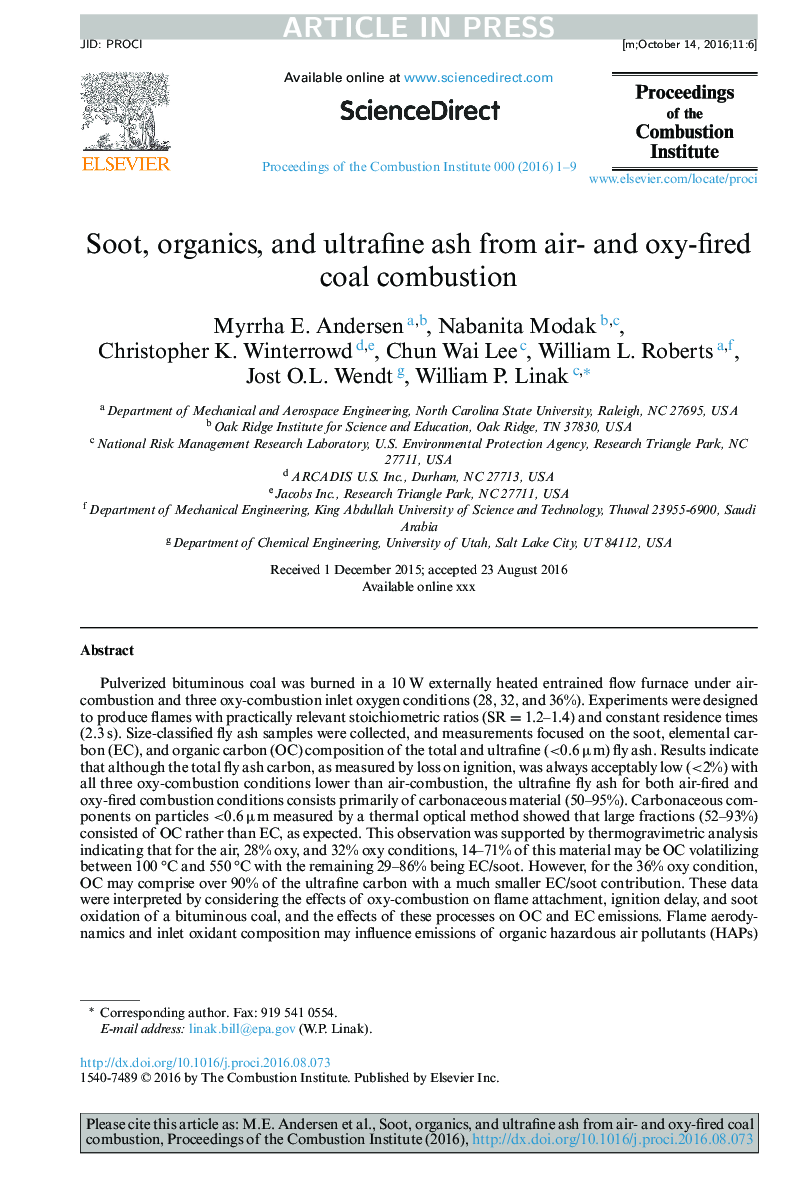| کد مقاله | کد نشریه | سال انتشار | مقاله انگلیسی | نسخه تمام متن |
|---|---|---|---|---|
| 4915463 | 1427915 | 2017 | 9 صفحه PDF | دانلود رایگان |
عنوان انگلیسی مقاله ISI
Soot, organics, and ultrafine ash from air- and oxy-fired coal combustion
ترجمه فارسی عنوان
دوده، ارگانیک و خاکستر فوق العاده از احتراق زغال سنگ هوای و هوای
دانلود مقاله + سفارش ترجمه
دانلود مقاله ISI انگلیسی
رایگان برای ایرانیان
کلمات کلیدی
احتراق اکسی زغال سنگ، خاکستر پرواز فوق العاده ای افت در احتراق، کربن المان کربن ارگانیک،
موضوعات مرتبط
مهندسی و علوم پایه
مهندسی شیمی
مهندسی شیمی (عمومی)
چکیده انگلیسی
Pulverized bituminous coal was burned in a 10 W externally heated entrained flow furnace under air-combustion and three oxy-combustion inlet oxygen conditions (28, 32, and 36%). Experiments were designed to produce flames with practically relevant stoichiometric ratios (SR = 1.2-1.4) and constant residence times (2.3 s). Size-classified fly ash samples were collected, and measurements focused on the soot, elemental carbon (EC), and organic carbon (OC) composition of the total and ultrafine (<0.6 µm) fly ash. Results indicate that although the total fly ash carbon, as measured by loss on ignition, was always acceptably low (<2%) with all three oxy-combustion conditions lower than air-combustion, the ultrafine fly ash for both air-fired and oxy-fired combustion conditions consists primarily of carbonaceous material (50-95%). Carbonaceous components on particles <0.6 µm measured by a thermal optical method showed that large fractions (52-93%) consisted of OC rather than EC, as expected. This observation was supported by thermogravimetric analysis indicating that for the air, 28% oxy, and 32% oxy conditions, 14-71% of this material may be OC volatilizing between 100 °C and 550 °C with the remaining 29-86% being EC/soot. However, for the 36% oxy condition, OC may comprise over 90% of the ultrafine carbon with a much smaller EC/soot contribution. These data were interpreted by considering the effects of oxy-combustion on flame attachment, ignition delay, and soot oxidation of a bituminous coal, and the effects of these processes on OC and EC emissions. Flame aerodynamics and inlet oxidant composition may influence emissions of organic hazardous air pollutants (HAPs) from a bituminous coal. During oxy-coal combustion, judicious control of inlet oxygen concentration and placement may be used to minimize organic HAP and soot emissions.
ناشر
Database: Elsevier - ScienceDirect (ساینس دایرکت)
Journal: Proceedings of the Combustion Institute - Volume 36, Issue 3, 2017, Pages 4029-4037
Journal: Proceedings of the Combustion Institute - Volume 36, Issue 3, 2017, Pages 4029-4037
نویسندگان
Myrrha E. Andersen, Nabanita Modak, Christopher K. Winterrowd, Chun Wai Lee, William L. Roberts, Jost O.L. Wendt, William P. Linak,
